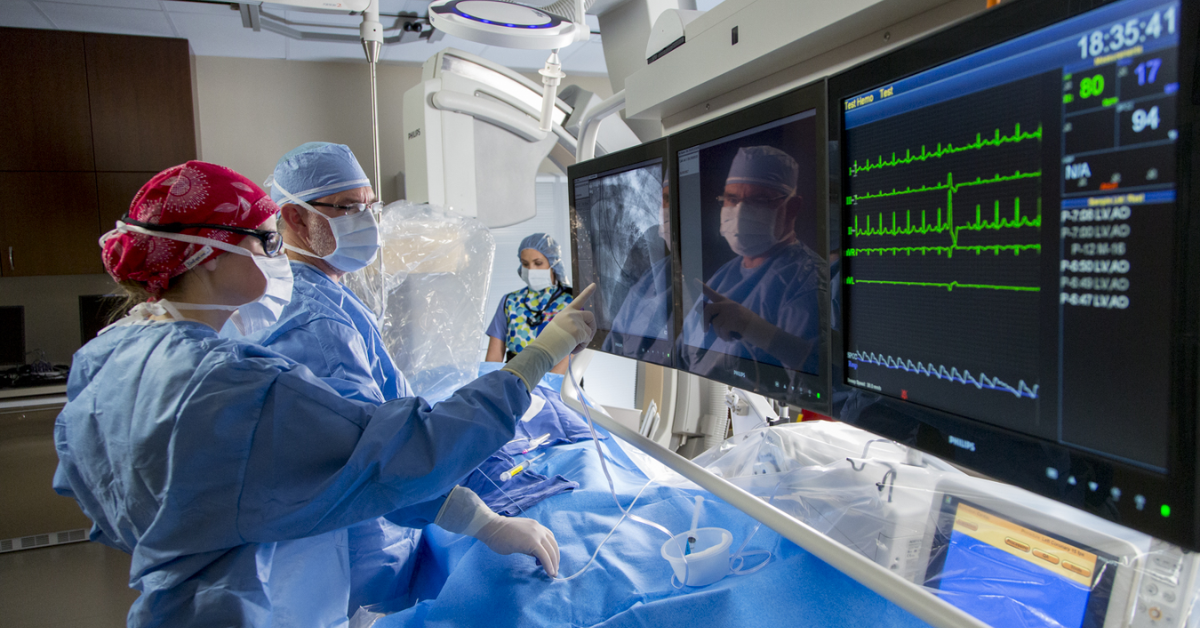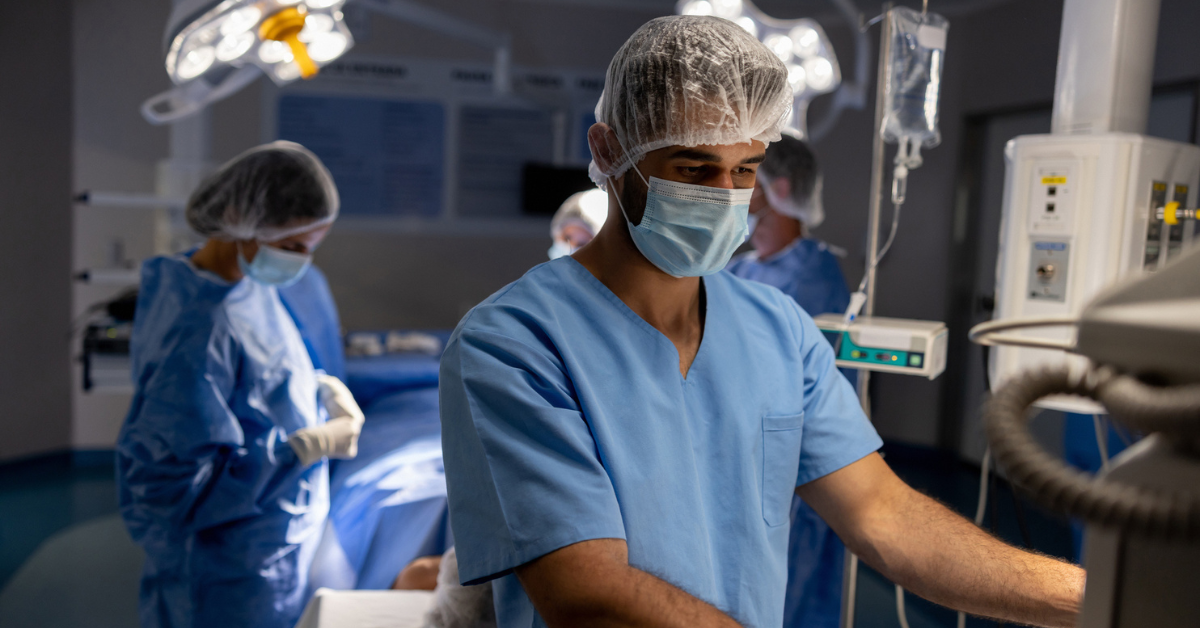
Best Practices for a Successful Cath Lab Team: Key Roles, Communication, and Collaborative Benefits
The great success of the cath lab team is due to its ability to work so well together as a collaborative group. If you’re struggling with your current cath lab team, or want to see how you can improve your own performance, here are some best practices to keep in mind!
Key Roles of a Successful Cath Lab Team
- Interventional Cardiologist: A Leader Before, During, and After Procedures
Interventional cardiologists wield the tools in the lab such as inserting heart catheters and implanting artificial valves, stents, and other devices, with the cath team’s support. They interact with the patient before and after procedures to discuss the procedure plan, assess the success of the procedure, and advise the patient on lifestyle or other changes they can make to prevent further heart problems. - Cath Lab Nurse: A Familiar, Steady Communicator
Cath lab nurses are key in helping patients and their loved ones feel comfortable going into what can be a stressful environment. Because some cath lab procedures don’t require full sedation, patients are frequently updated with what they may feel during the session and assured that what they’re experiencing is normal. The entire team helps to inform and assure the patient to keep them calm and educated on their progress. - Radiologic Technologist: A Specialist Who Monitors the Whole Team
Cath lab techs work side-by-side with the entire cath lab team to assist in the procedure or monitor patient vital signs or relay information obtained via the x-ray machine. They also can be responsible for ensuring the entire cath lab team is safe from excessive doses of radiation from the x-ray equipment.
Ways Cath Lab Teams Can Communicate for Better Outcomes
Communication in a cath lab needs to be quick and clear. Team members will need to maintain good communication skills, such as:
- Active listening: Being “present” is the key to active listening. Your mind cannot wander. Instead, focus on comprehension and understanding what is being said, not simply waiting for your turn to speak.
- Conflict resolution: Team dynamics can break down if a conflict is not resolved. Much like in an emergency room setting, if problems arise, they must be quickly sorted. Disagreements on how to proceed can spur doubt and unease in the team. Communicating quickly if one disagrees with an approach, with clear facts and supporting details is important.
- Respect: Holding team members in respect for their training and performance can foster good communication in a cath lab. Not only does respect lead to more respect, but it also creates a positive environment and a professional team dynamic.
- Leadership: Leadership, when it comes to communication, can look like being reliable in your task completion, or in bolstering a team under strain. While often the interventional cardiologist is seen as the leader of the team, anyone can be a good leader in the cath lab. In this way, leadership is often shared as tasks are simultaneously completed to keep the patient healthy and safe from harm.
- Goal-focused: Communication should be always moving toward the team’s shared goal, whether that is the next step of the procedure, the completion of the session, or a pivot to re-stabilize the patient in an emergency.
The Big Benefits of Collaboration in the Cath Lab
A well-attuned team of cath lab specialists works together in a kind of medical team ballet. They will try to anticipate the other person’s needs in routine procedures, or they will quickly communicate their needs if circumstances change, such as in an emergency.
For example, in one noted case of an emergency in the cath lab, a team was quick to jump into action to perform CPR along with other life-saving techniques on a patient under distress. The cath lab nurses performed CPR while the interventional team restored the underlying coronary complication: performing and monitoring angiography and thrombectomy.
- Clinician morale and retention: A well-functioning cath lab team creates a reliable environment where work gets done as anticipated. In these situations, stress is low and work is manageable. By contrast, when the “machinery” of a team breaks down, work is harder because everyone is constantly under stress and strain. Given the two options, we’d all likely choose the environment that is low-stress and more reliable. Without breakdowns, individuals can find time for innovation and think outside the box. This is an environment where workers will want to return.
- Improved patient outcomes: In addition, when teams communicate well and collaborate together, such as in a well-functioning cath lab, the patient receives improved outcomes from their cardiac procedure. We all want a positive outcome for each patient, and time and again, those are shown as more possible if a team works together, not against one another.
Read more about how CardioSolution brings cath lab teams to hospitals in its network.
 company
company 
 (866) 755-7519
(866) 755-7519












